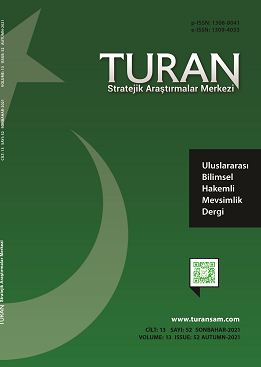SUOMİ’DEKİ/FİNLANDİYA URAL-ALTAY ÇALIŞMALARINDA BİLİM ETİĞİ
SCIENTIFIC ETHICS IN URAL-ALTAI STUDIES IN SUOMI/FINLAND
Author(s): Sevil İrevanliSubject(s): Language studies, Ethics / Practical Philosophy, Historical Linguistics, Cultural Anthropology / Ethnology, Turkic languages
Published by: Sage Yayınları
Keywords: Ural-Altaic Languages; Turkology; Academy of Sciences; Tsarist Period; Ethnography;
Summary/Abstract: Among the languages of the world, the Ural-Altaic languages are the most controversial language family. Turkic languages, which fall under the Altaic branch of the Ural-Altaic language family, have been used in various political units in the European continent for centuries. In the 19th century, the structural similarity of the languages of the world interested scientists. The study of these languages in Russia took place in the Petersburg Academy of Sciences, founded by Tsar Peter I in 1724. Sweden, which shows itself in the field of culture, opened three universities in this period. These are: Yppsala, Turku, Tartu. However, when Suomi was under the rule of the Tsar, the sescience centers were connected to the Peterburg Academy of Sciences in the 19th century. Tsar's Crown Prince Nicholas I was appointed as the first rector of Turku University. In the 19th century, Turcological studies in Suomi began the study of Finno-Ugric languages under the auspices of the Academy of Sciences. The studies to be mentioned were given importance to the study of the languages of the Finno Ugric Turkic-Tatar peoples, and a large amount of money was allocated for field research. Orkhon Yenisey Monuments were also explored here. Scientists such as Mathias A. Castrén, Elias Lönnrot, Mirza Kazım Bey and Herman Kellgren are known to research Ural-Altaic languages in the 19th century. The primary purpose in the studies was in the name of science and although the data obtained were used for different purposes later on, the researches made significant contributions to Turcology. From the beginning of the 20th century, studies were carried out to prove the theory that the Altaic Language Theory (Turkish, Mongolian, Tungusic Manchu languages have similar origins. Gustav John Ramstedt and A. Martti Räsänen, who continued these studies. These four scientists whose names are mentioned (H. Kelgren) , MA Castrén, GJ Ramstedt, AM Räsänen) is the main subject of the study.
Journal: TURAN-SAM
- Issue Year: 13/2021
- Issue No: 52
- Page Range: 382-391
- Page Count: 10
- Language: Turkish

